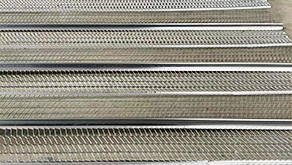ਦਸੰ. . 15, 2024 13:20 Back to list
ductile iron dismantling joint
Understanding Ductile Iron Dismantling Joints Features and Applications
Ductile iron dismantling joints play a crucial role in modern piping systems, primarily in water and wastewater management. As industries continue to evolve, the need for efficient, reliable, and flexible piping solutions becomes increasingly important. Ductile iron dismantling joints, known for their strength and versatility, have emerged as a preferred choice in various applications.
What is a Dismantling Joint?
A dismantling joint is a mechanical fitting that allows for the disassembly of pipe connections with ease, facilitating maintenance, repairs, and system modifications without the need for cutting or extensive disassembly of the pipe system. This ability is particularly advantageous in complex piping networks, where accessibility can often be restricted.
Ductile iron, which is an iron alloy that demonstrates excellent tensile strength and ductility, forms the basis of these joints. The material can withstand high pressure and harsh environmental conditions, making it an ideal choice for critical applications. Unlike traditional cast iron, ductile iron has improved impact resistance, flexibility, and strength, extending the lifespan of the entire piping system.
Key Features of Ductile Iron Dismantling Joints
1. Flexibility and Adjustability Ductile iron dismantling joints allow considerable movement and adjustments in the piping system. This feature is essential in systems where misalignment may occur due to ground settlement, thermal expansion, or seismic activities.
2. Robust Construction The durability of ductile iron ensures that these joints can withstand the rigors of heavy industry. This makes them suitable for use in high-pressure applications and environments where corrosion and wear are concerns.
ductile iron dismantling joint

3. Ease of Installation and Maintenance The design of dismantling joints allows for quick installation and disassembly without special tools. This can significantly reduce downtime during maintenance operations, resulting in cost savings for industries.
4. Versatile Applications Ductile iron dismantling joints are commonly used in diverse applications, including water distribution networks, sewage systems, and industrial piping systems. Their versatility extends to use with various pipe materials, including PVC, PE, and steel.
5. Leak-Free Performance The quality of mechanical seals in dismantling joints ensures effective sealing, preventing leaks that could compromise system integrity and safety.
Applications in Industry
Ductile iron dismantling joints are widely utilized across numerous sectors. In municipal water supply systems, they provide critical support during valve and pump inspection or replacement. In wastewater management, they facilitate access to sewers and treatment facilities, allowing for easy maintenance without disturbing the surrounding infrastructure.
In industrial applications, these joints can support pipelines that transport fuels, chemicals, or other materials. Their ability to adjust to dynamic movement and vibrations makes them particularly suitable for petroleum and petrochemical industries.
Conclusion
The implementation of ductile iron dismantling joints represents a significant advancement in the field of piping systems. Their adaptability, ease of use, and robust nature make them indispensable for the efficient management of complex pipelines in various sectors. As industries continue to prioritize reliability and ease of maintenance, the demand for such innovative solutions is likely to grow. Engineers and contractors must recognize the benefits of choosing ductile iron dismantling joints as a means to enhance system reliability while maximizing performance and efficiency. Ultimately, the incorporation of these joints into piping systems not only supports operational needs but also contributes to sustainable practices in resource management.
Share